7 Composters & Food Waste-Reducers That Will Change Your Life (And the World)!
May 23, 2023
We’re heading into the summer, and you know what that means… let’s get composting!
Composting is a great way to reduce landfill waste and can also help create nourishing soil for your garden. It can generate valuable habitat for insects, create ideal conditions for beneficial organisms, and can even help prevent soil erosion. But with so many different options and techniques, where do you start?
Depending on your motivation, as well as your space, budget, and time, there are different methods of composting to choose from. Let’s explore a few options.
1) Worm Bin
Wiggly, jiggly and messy, worm bins are a great way to compost! While they can certainly work at home or in the office, we especially like them in the classroom. If you’re a teacher looking to teach ecology or science, there’s really no better way to get kids excited than with this immersive classroom project!
Either purchase a worm box or, if you’re feeling crafty, take the DIY route with a large Rubbermaid bin with a few small holes drilled into the sides. Whatever vessel you choose, start by filling it with bedding material (coconut coir, shredding inkless paper, leaves…). Add your worms and a bit of soil for them to burrow and mix it all up. When you’re adding food scraps, be sure to bury them under the bedding material. This will help keep flies and pests away, retain moisture, and protect the worms.
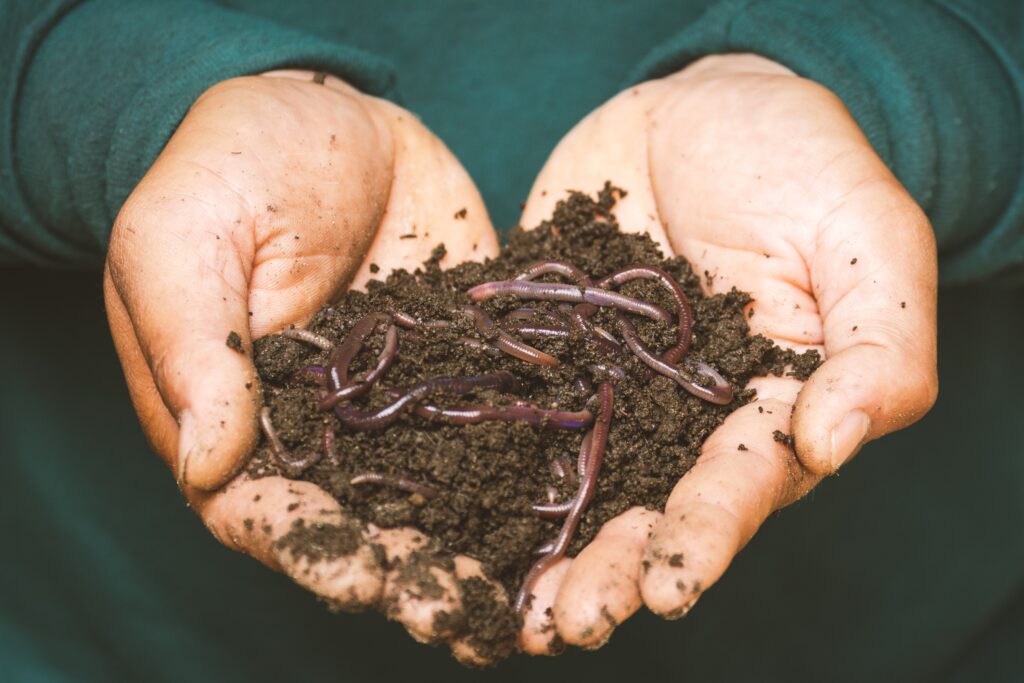
Type of composting: Vermicomposting
Ideal for: Classrooms
Why we love it: Hands-on, fun, immersive, and an excellent way to engage young people in science. This type of composting helps prevent erosion and maintains moisture in the soil, which plants love! It’s a great way to get rid of some food scraps and reduce waste in the landfill.
What can be added: Food scraps, natural paper, tea and coffee, dead plants and grasses, untreated wood shavings, feathers and dryer lint
What to avoid adding: Meat, fats, dairy, processed foods, odorous foods like garlic and onion, excessive citrus, bread, animal waste, spices, treated wood/paper
Things to consider: Red wigglers are most commonly used in these worm bins as they are surface feeders and more adept to living in this type of composting environment. It is important to note, however, these worms like to stay warm, so this method of composting should be conducted indoors (at least in New Brunswick!).
Cost associated: $80 – $250
2) The Aerobin
A great option for outdoor composting, the Aerobin takes up little space and is relatively low-maintenance and easy to use. Food scraps can be added as well as lawn clippings, and fresh leaves, alternating with a dry or brown layer; woodchips, sawdust, dried leaves or grass, sticks, peat moss, eggshells…).
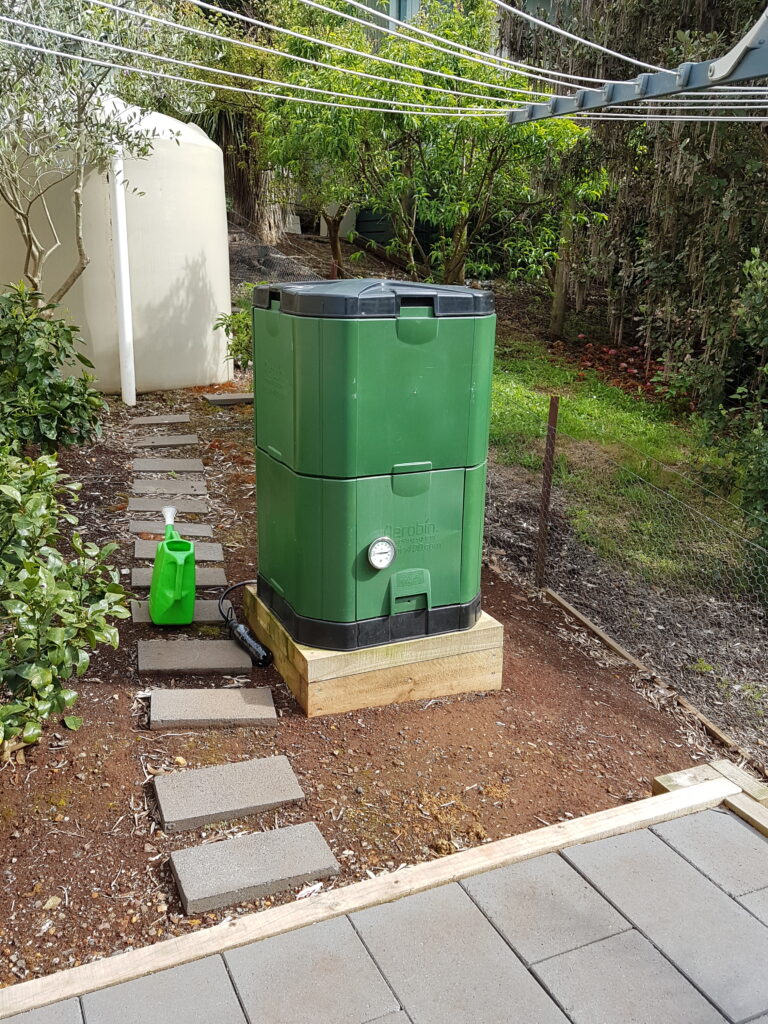
Photo provided by Aerobin
Type of Composting: Aerobic hot composting
Ideal for: Backyards or schoolyards
Why we love it: The Aerobin produces high-quality, nutrient-rich compost. Designed with aeration built in, no mixing is required. Because this system of composting uses heat to break down organic matter worms are also not required (though they may invite themselves in through holes at the bottom which is absolutely fine). Since worms do not need to be added and the insulated bin retains heat that is naturally generated through decomposition, this bin can also be used year-round!
What can be added: Coffee grounds, vegetable and fruit scraps, fresh plant clippings, green grass and weeds, eggshells, hair, lint, wood shavings, dry leaves
What to avoid adding: Meat, dairy, processed foods, bones, pet waste, fats and oils
Things to consider: Access to an outdoor space is required, you may need to manually mix if you don’t layer your “greens” and “browns” adequately or if you add too many twigs. This is not a fast-composting system. While this composter is not yet widely available in Canada, the company does have plans to make their product available on Amazon soon. Follow Aerobin on Instagram for updates!
Cost associated: $300-$500
3) The Garden Tower 2
Perfect for small outdoor spaces, the Garden Tower 2 composter is also a vertical garden! Built with a composter in the center, this planter uses worms to break down food scraps, directly providing nutrients for the surrounding plants. In only 4.5 square feet you can grow up to 50 plants, continuously adding your food scraps to the center column with layers of “brown” in between.
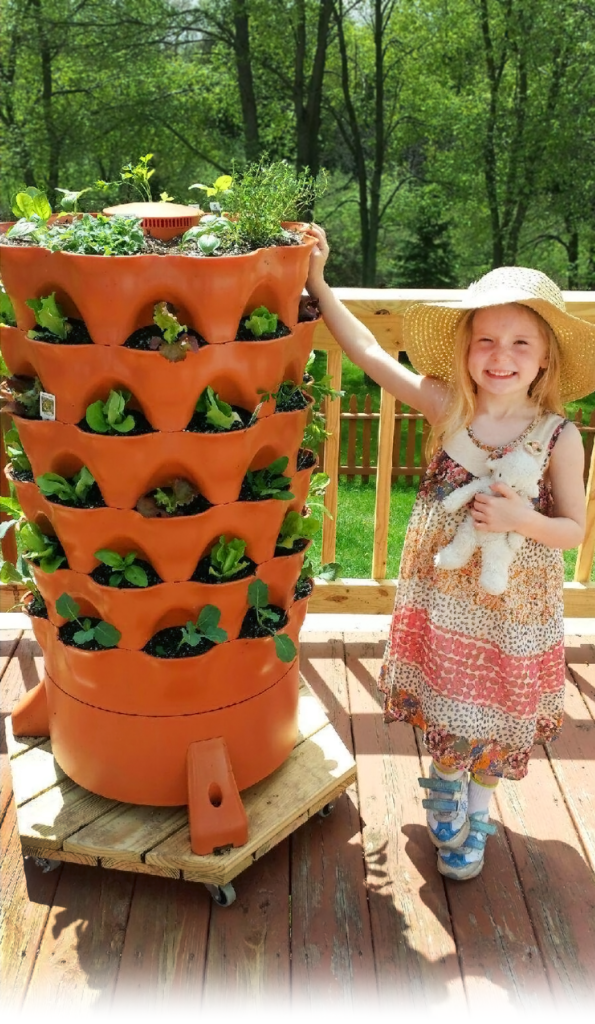
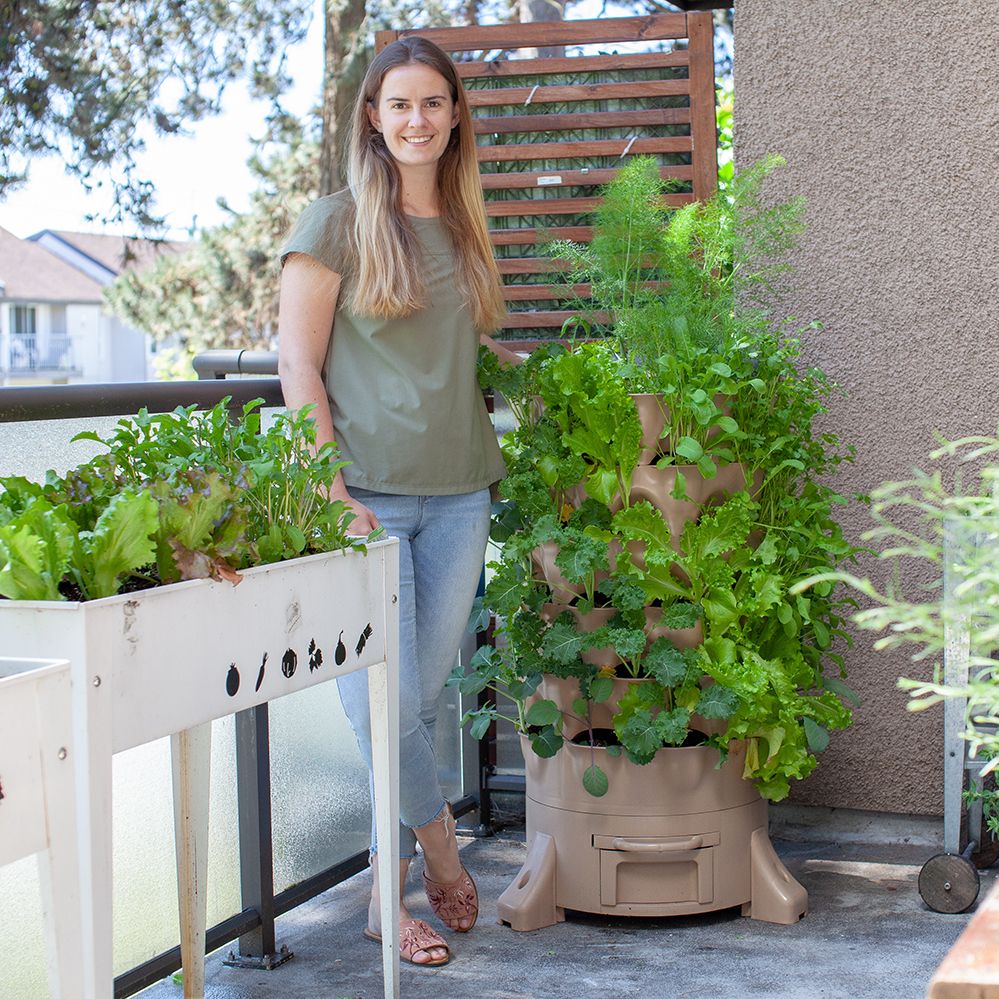
Photos provided by Garden Tower Project
Type of Composting: Vermiculture
Ideal for: Backyards, balconies, patios
Why we love it: It’s beautiful! Well-suited for growing herbs, lettuces, flowers or other leafy greens, this composter is not only easy on the eyes, but its vertical design maximizes your growing space. Built with 100% recyclable, BPA-Free plastic, the Garden Tower 2 is an excellent option to bring sustainability to your small outdoor space!
What can be added: Food scraps, natural paper, coffee grounds, tea, dead plants and grasses, untreated wood shavings, feathers and dryer lint
What to avoid adding: Meat, dairy, processed foods, odorous foods like garlic and onion, excessive citrus, bread, animal waste, spices, treated wood/paper, fats and oils
Things to consider: Great for smaller operations, this composter does not have a large volume. Perfect for small families and individuals, or as a secondary compost system. Not built for growing hearty, heavy or large plants, through you can grow some heavier vegetables and fruits such as small melons and squash in the bottom row.
Cost associated: $500-$600
4. The Pile Method
Tried, tested and true, the pile method has become one the most popular for out-of-city living for decades. It’s low cost and relatively low maintenance; add a green layer (food scraps, fresh plant clippings etc…), and then a brown layer (dried grasses/leaves etc..). Mix every 1-2 weeks!
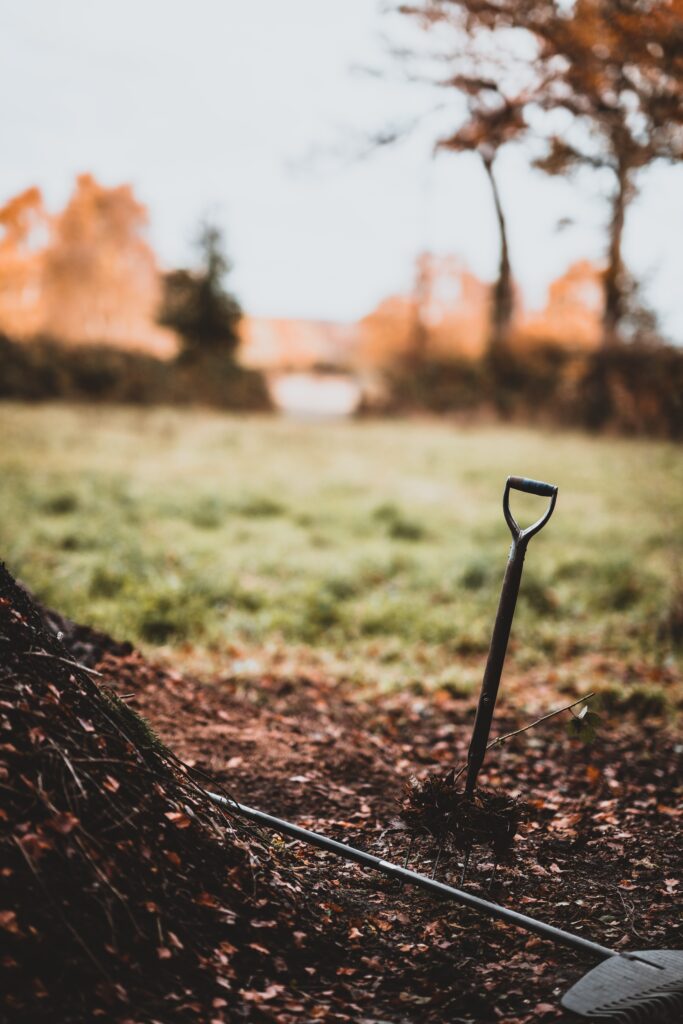
Type of Composting: Hot composting
Ideal for: Large backyards in rural areas
Why we love it: Starting a backyard compost pile is easy and inexpensive; it would only cost you an afternoon! You don’t need to purchase any worms; they, as well as other native decomposers will naturally appear. Done correctly, this is an easy, sustainable, and economic way to create your own rich soil.
What can be added: vegetable and fruit scraps, green and brown garden clippings, twigs, woodchips, coffee grounds and tea, eggshells, untreated paper, fur and hair, paper towel roles
What to avoid adding: Meat, fats and butter, bones, dairy, processed foods, pet waste
Things to consider: The pile method requires space, ideally in a rural setting (city neighbours might not appreciate a compost pile right next door!). Some people may find this method unsightly, and done incorrectly, this method can attract pests such as racoons, bears, skunks and mice. Compost piles can be used year-round, though it’s easiest in the summer when the ground is not frozen or covered in snow. It requires some manual labour (mixing) and can take up to a year to generate soil.
Cost associated: $0
5) Bokashi Bucket
Okay, so technically this isn’t composting (it’s fermenting), but it’s absolutely worth mentioning! The Bokashi Bucket is a unique and excellent way to break down food scraps into useable soil without worms, aeration, or heat. The Bokashi Bucket can be used outdoors all year long, and only take 1-2 months for scraps to break down. All food scraps including meat, bones and dairy can go into the Bokashi Bucket, and the sealed bin keeps the odor within the container so there is no risk of pests. Between layers of food scraps, sprinkle some Bokashi bran, which contains a high concentration of microbes – this is going to break down your food quickly. When the bin is full, put the lid on and set your bin aside for a couple weeks. After two weeks you can go ahead and bury your Bokashi pre compost right into your garden where it will continue to decompose, turning into rich soil.
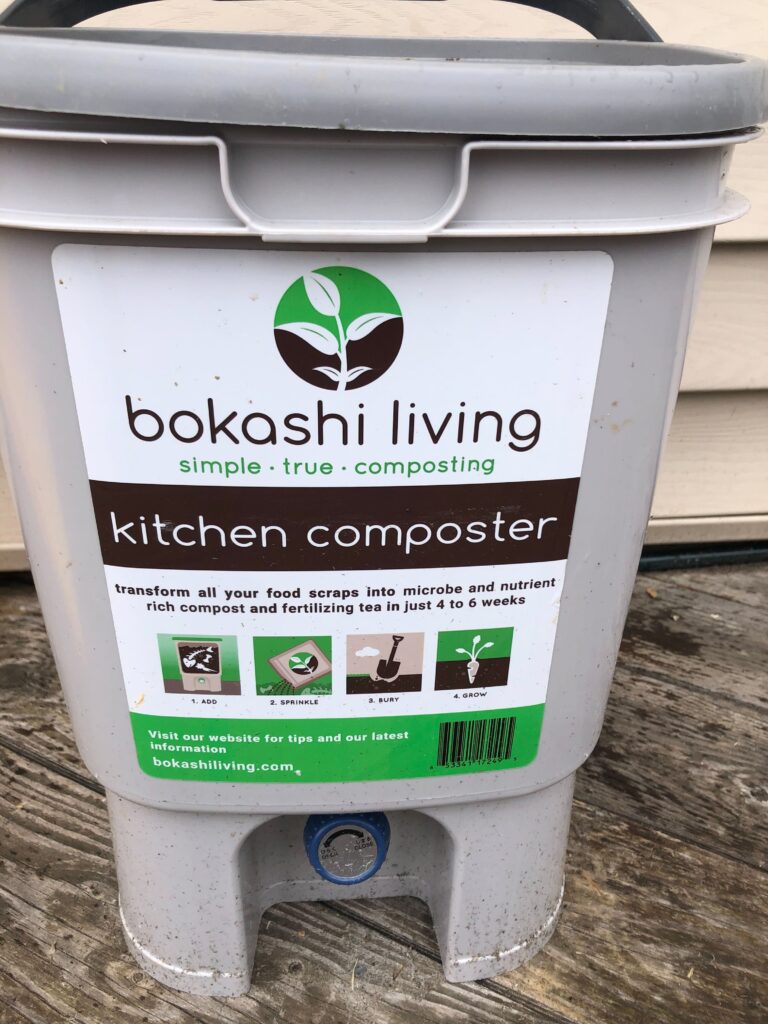
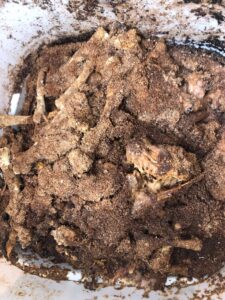
Type of Composting: Fermentation
Ideal for: At home use, offices or school (outdoor greenspace is required for burying contents)
Why we love it: The Bokashi Bucket is an excellent option all year long. It creates nutrient-rich soil relatively quickly and almost any food can be added to the bin. There is no risk of critters, it works well in small spaces, and can be used indoors or outdoors. Overall, this is one of the most versatile and easy alternatives to composting on the market!
What can be added: Fruit and vegetables scraps, meat (raw or cooked), small bones, processed foods, dairy, coffee grounds, shells, tea bags
What to avoid adding: Compostable plastics, large amounts of salt, garden trimmings
Things to consider: While healthy compost shouldn’t produce a smell, the Bokashi Bin technically ferments, which does produce an odor. You may find that the interior of your bin smells a bit fruity or acidic due to the bacteria and microorganisms breaking down organic matter. This creates a liquid which will need to be drained every few days. On the bright side, this liquid is like a superfood for your indoor or outdoor plants!
Cost associated: $150-$180
6) Green Cone
Interested in keeping your food waste out of the landfill in a sustainable way but not necessarily interested in generating soil for your flowerbed? The Green Cone might be the perfect option for you! This food waste digestor breaks down almost any food using heat, air, and microorganisms. With a footprint of approximately 4 cubic feet and the ability to “digest” up to 2lb of food per day, this is an excellent backyard option for an average-sized family.
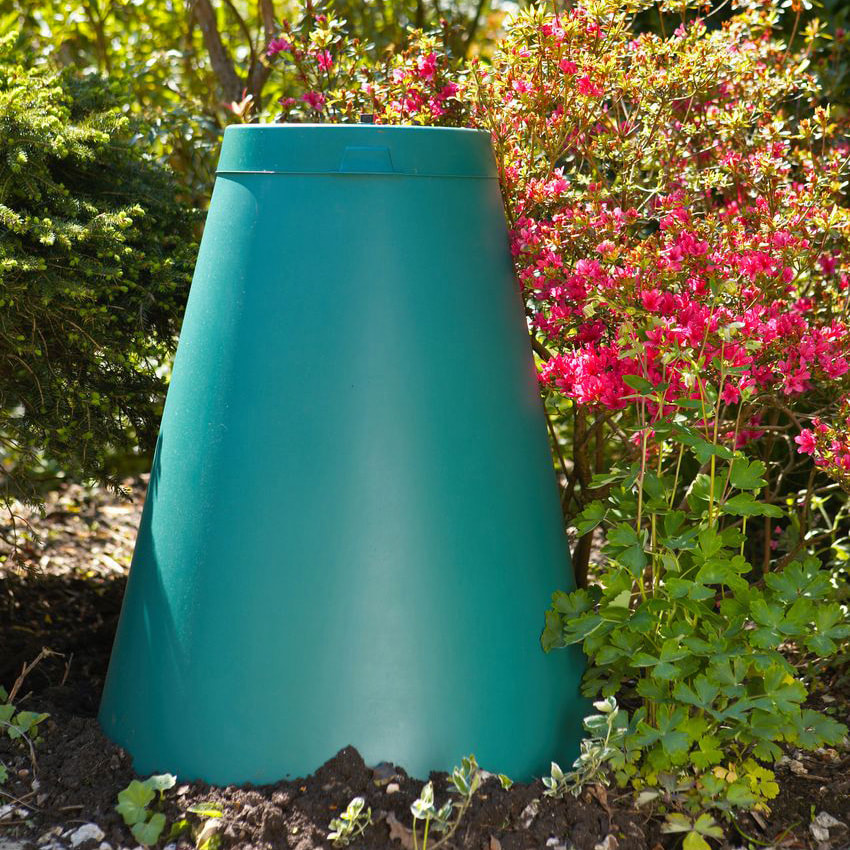
Photo Provided by Green Cone & Tar River Trading Post
Type of Composting: Aerobic digestion
Ideal for: Sunny, well-drained backyards or schoolyards
Why we love it: The Green Cone is easily one of the simplest compost options on the market. With minimal upkeep (no layering of mixing required), this bin is easy for the whole family to use. Just pop it outdoors, add your food waste, and move it every 1-2 years. You won’t harvest any soil for your garden with this unit, but rich nutrients will transfer into the surrounding earth.
What can be added: Just about everything you eat! Fruit and vegetable clippings, meat, dairy, tea bags, eggshells, bread, small amounts of fats and oils (from cooking)
What to avoid adding: Paper, metal, plastic, chemicals, grass and garden clippings, large amounts of oils and fats
Things to consider: When installed correctly the Green Cone does not generate foul smells or attract pests. If food is left outside of the Green Cone too long prior to being added flies may already be on the skins of the fruits or vegetables which can transfer them inside. Additionally, since the Green Cone is technically a digester rather than a composter, twigs and leaves cannot be added; this bin is specifically designed to break down food scraps!
Cost associated: $200 – $250
7) Food Cycler
One of the slickest and most desirable food waste-reducer options on the market, food cyclers are on track to becoming a staple appliance in workspaces, schools and homes alike. Fast and easy to use, these devices fit comfortably on a countertop. Food cyclers work by dehydrating and grinding food into nutrient-rich fragments that can be added to household plants or gardens.
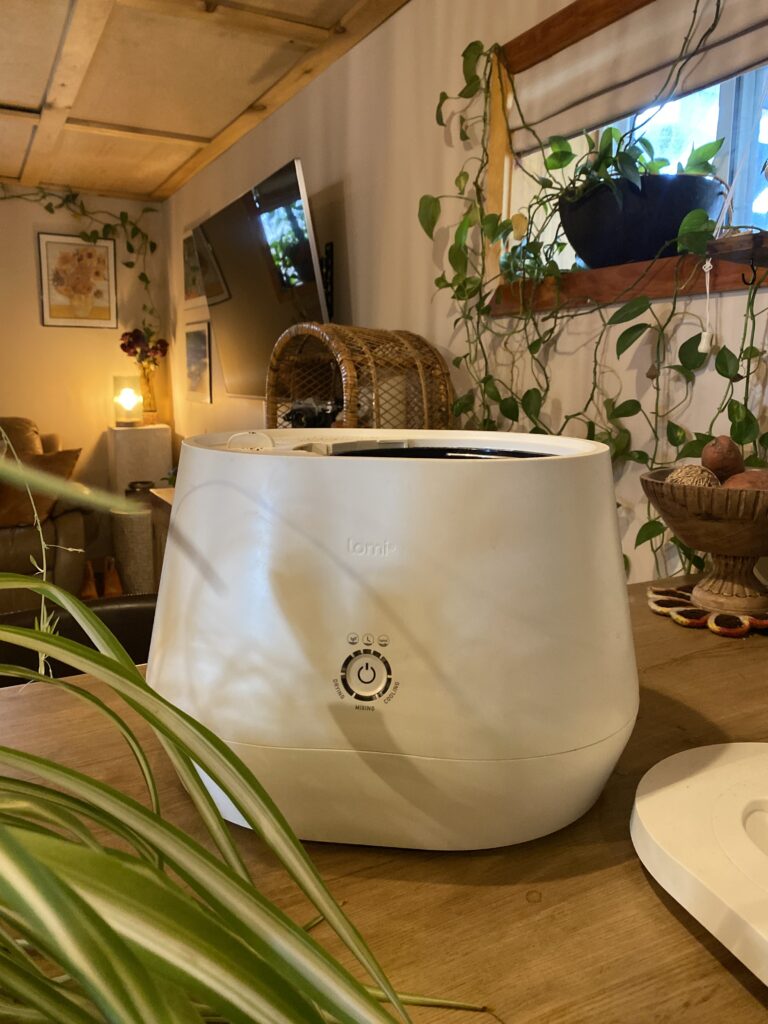
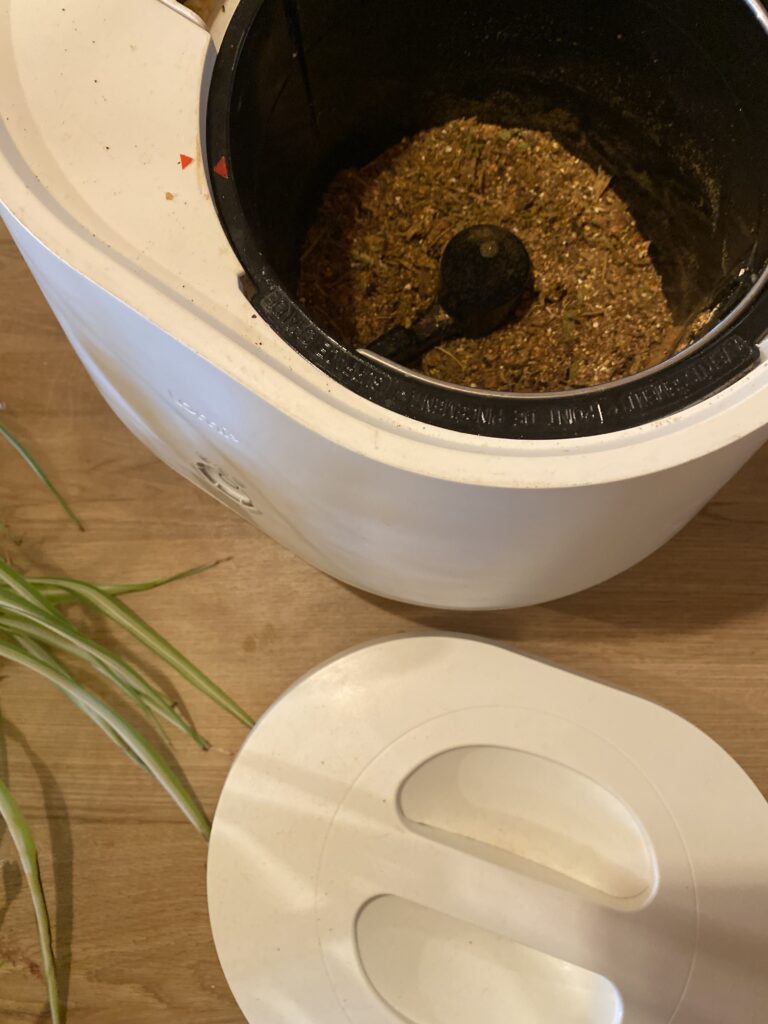
Photos provided by Kelly Green
Type of Composting: Technically not composting, this device breaks food down into an easily compostable substance
Ideal for: Homes, condos, classrooms, workspaces
Why we love it: No outdoor space? No green thumb? No problem! Food cyclers (such as the Lomi), are an effective way of keeping food waste from reaching the landfill. Since it’s technically not a composter, you won’t generate soil, but the byproduct that is generated (typically within 3-10 hours) can be mixed into soil (for plants indoors and out!). Food cyclers are generally mess-free, smell-free and require minimal upkeep (much like other countertop appliances).
What can be added: Fruit and vegetable scraps, eggshells, bread, meat, coffee grounds, plant trimmings, compostable napkins and plates
What to avoid adding: Bones, oils and fats, fruit pits, animal waste, liquids
Things to consider: Food composters such as the Lomi require the use of pods (a blend of probiotics), or filters. This is an added expense, and they need to be replaced/replenished over time. Food cyclers are an excellent option for small amounts of food, and not ideal for large commercial projects or school-wide use.
Cost associated: $650
Picking a composter or food waste-reducer can be a bit overwhelming; there are so many options available that meet diverse needs, interests, spaces and price-points! According to the U.S. Environmental Protection Agency (EPA), “over one-third of food produced in the United States is never eaten…Food waste is the single most common material landfilled and incinerated in the United States”. Wasted food in landfills is problematic, producing methane and contaminating groundwater. Composting at home, school or work may be just one small step to taking climate action, but it has influence and value nonetheless! Every action has a consequence, and every person has an impact.
So, as we head into the summer, are you ready to try something new? Then let’s get composting!
References:
1) “Vermicomposting 101.” FoodPrint, 6 Aug. 2020, foodprint.org/eating-sustainably/composting-and-food-waste/vermicomposting-101/.
2) “The Aerobin 400: Our New Composting System.” The Aerobin 400: Our New Composting System, 9 Feb. 2012, www.17apart.com/2012/02/aerobin-400-our-new-composting-system.html.
3) Osmond, Candace. “Aerobin 400 Composter Review.” BackyardBoss, 4 Feb. 2017, www.backyardboss.net/aerobin-400-composter-review/.
4) Jones, Nadya. “Garden Tower 2 Review 2023.” A Nest With A Yard, 26 Mar. 2021, anestwithayard.com/garden-tower-2-review/.
5) “Garden Tower: Vertical Gardening for Canada: Order Online.” The Garden Tower 2, 15 Nov. 2021, gardentower2.ca/.
6) “The Waste Revolution for Modern Living.” Aerobin, www.aerobin400.com/. Accessed 17 May 2023.
7) “How Does It Work?: Bokashi Living: Bokashi Experts.” Bokashi Living | Bokashi Experts, 16 June 2022, bokashiliving.com/how-does-it-work/.
8) “Info, FAQ, System Features.” COMPOSTEC, www.compostec.ca/the-green-cone.html. Accessed 17 May 2023.
9) Green Cone Manual, www.brockton.ca/en/our-services/resources/Waste_Management/Green-Cone-Manual.pdf. Accessed 17 May 2023.
10) “Green Cone Solar Food Waste Digester & Composter.” Green Cone USA, www.greenconeusa.com/green-cone-solar-food-waste-digester.html. Accessed 17 May 2023.
11) “Lomi Composter.” Lomi, lomi.com/products/lomi. Accessed 17 May 2023.
12) “Urbalive Worm Farm.” Wormbox.Ca, wormbox.ca/products/urbalive-indoor-worm-farm. Accessed 17 May 2023.
13) “The Easy and Clean Way to Compost Your Food Waste! No Foul Smell. No Mess. No Pests.” The Bokashi Bucket, thebokashibucket.com/. Accessed 17 May 2023.
14) From Farm to Kitchen: The Environmental Impacts of U.S. Food Waste (Part 1), Nov. 2021, www.epa.gov/system/files/documents/2021-11/from-farm-to-kitchen-the-environmental-impacts-of-u.s.-food-waste_508-tagged.pdf.
Author: Katelyn Plant, Marketing & Communications Manager, The Gaia Project
Follow us on social for more stories, news and updates:
Facebook: www.facebook.com/gaiaproject
Instagram: @thegaiaproject_
Twitter: @gaiaproject
LinkedIn: @thegaiaproject-projetgaia
TikTok: @thegaiaproject_